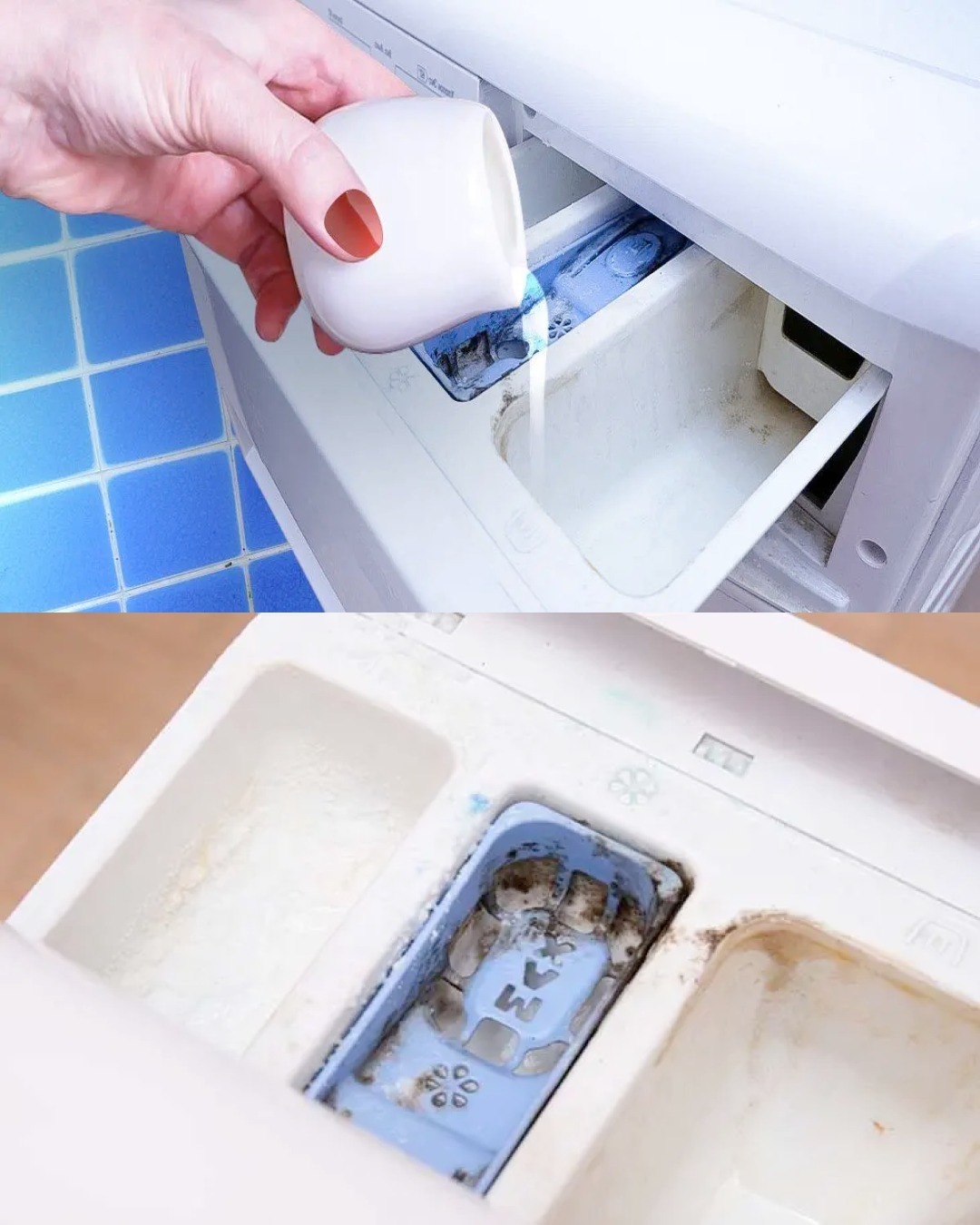ADVERTISEMENT
**The Genius Trick to Clean the Washing Machine Drawer: Like New, It Will Be Rid of Mold**
If you’re like most people, you probably don’t think much about your washing machine drawer until you notice that it’s dirty, moldy, or emitting an unpleasant smell. The washing machine drawer, where you add detergent, fabric softener, and other laundry products, can easily accumulate grime, soap scum, and mold due to moisture buildup. Over time, this can affect the cleanliness of your laundry and even cause odors to transfer onto your clothes.
But don’t worry! **There’s a genius trick** to clean your washing machine drawer and remove mold, leaving it looking like new and fresh again. Best of all, it requires only a few simple ingredients and doesn’t take much time at all. Let’s dive into the step-by-step process!
—
### **Why the Washing Machine Drawer Gets Moldy and Dirty**
Before we get into the cleaning process, let’s take a quick look at why the washing machine drawer tends to accumulate mold and grime:
1. **Excess Moisture**: After each wash, water and detergent residues can stay behind in the drawer, creating a perfect environment for mold and mildew to grow.
2. **Soap Scum**: Over time, detergent and fabric softener can build up, especially if you use too much or if they’re not properly rinsed out.
3. **Lack of Ventilation**: If you leave the washing machine drawer closed after each wash, it can trap moisture inside, allowing mold to form. A humid, closed environment is ideal for mold to thrive.
Now that we understand the cause, let’s get to the cleaning solution!
—
### **Ingredients You’ll Need**
– **Baking soda** (a natural cleaner that helps deodorize and scrub away grime)
– **White vinegar** (a natural disinfectant that breaks down soap scum and kills mold)
– **An old toothbrush** (for scrubbing those hard-to-reach areas)
– **Hot water** (to loosen up any build-up)
– **A microfiber cloth or towel** (to wipe down and dry the drawer)
– **Optional: Hydrogen peroxide** (for extra mold-killing power)
—
### **Step-by-Step Guide to Clean Your Washing Machine Drawer**
#### **1. Remove the Drawer**
The first step is to **remove the drawer** from the washing machine. Most washing machine drawers can be easily pulled out by pressing a button or sliding it gently out. Consult your washing machine’s manual if you’re unsure.
#### **2. Soak the Drawer**
Once removed, soak the drawer in **hot water** for 10-15 minutes. This will help loosen up any detergent build-up, soap scum, or mold growth. If the drawer is particularly dirty or moldy, add a bit of **white vinegar** to the water. The vinegar’s acidity will help break down the gunk and kill the mold spores.
#### **3. Scrub the Drawer**
After soaking, grab your **old toothbrush** and dip it into a mixture of **baking soda** and **water** (a paste-like consistency works best). Use the toothbrush to scrub all parts of the drawer, especially the corners and crevices where mold and detergent residue often hide. The baking soda will help to scrub away grime without damaging the plastic or metal.
If there are stubborn mold spots, apply a bit of **hydrogen peroxide** directly to the affected areas. Let it sit for a few minutes before scrubbing. Hydrogen peroxide works wonders for killing mold and mildew.
#### **4. Clean the Drawer Slot**
While the drawer is soaking, don’t forget about the slot where the drawer sits! This area can accumulate soap scum and mold as well. Use a microfiber cloth or an old rag to wipe down the slot. You can dip it in a mixture of vinegar and water or just use straight vinegar for extra disinfecting power. Scrub and wipe the edges to ensure you’re removing all residue and moisture.
**5. Rinse and Dry**
Once you’ve finished scrubbing, **rinse the drawer** thoroughly under warm running water to remove any leftover residue or cleaning solution. Be sure to dry the drawer completely with a **towel** or microfiber cloth to prevent moisture from lingering, which could lead to new mold growth.
For Complete Cooking STEPS Please Head On Over To Next Page Or Open button (>) and don’t forget to SHARE with your Facebook friends
ADVERTISEMENT
